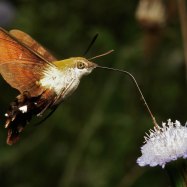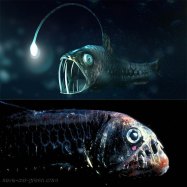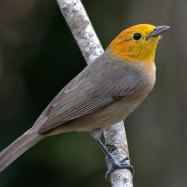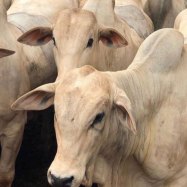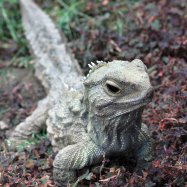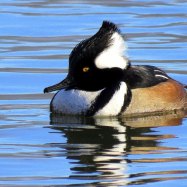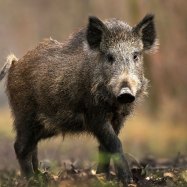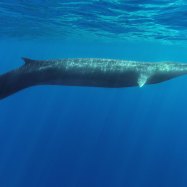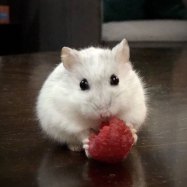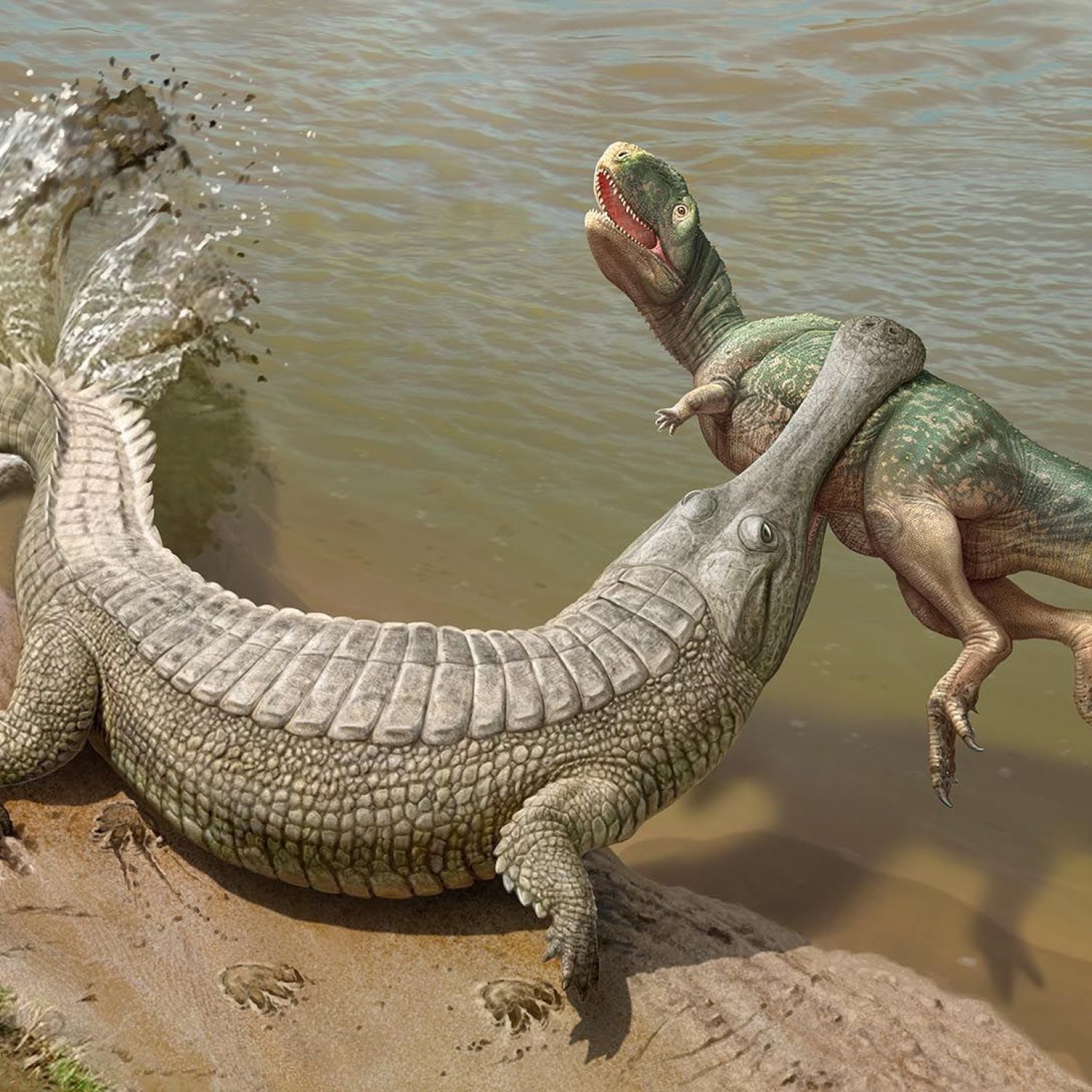
Sarcosuchus
10-12 meters (33-39 feet)
Discover The Mighty Sarcosuchus: This massive crocodile-like creature roamed the Ténéré Desert millions of years ago. With a length of 10-12 meters, it was as long as a bus! Its long, streamlined body and powerful jaws made it a formidable predator. Learn more about this ancient reptile and its Crocodylidae family. #Sarcosuchus #prehistoric #crocodylidae #tenere #desert #paleontology
Animal Details Summary:
Common Name: SuperCroc
Kingdom: Animalia
Habitat: Freshwater
The Ancient SuperCroc: Exploring the Fascinating World of Sarcosuchus
Deep in the vast expanse of the African Ténéré Desert, the mighty Sarcosuchus once roamed the land. This prehistoric creature, also known as SuperCroc, was a formidable giant that is known to have lived over a hundred million years ago. Its remains, discovered in Niger, have captivated scientists and the general public alike, providing a glimpse into a fascinating world long gone.But what makes Sarcosuchus so intriguing? Let's delve into the history and characteristics of this ancient super predator, and understand why it continues to capture our imagination even today Sarcosuchus.
The Origins of Sarcosuchus
Scientifically known as Sarcosuchus, this enormous reptile is also referred to as the "flesh crocodile" due to its massive size and carnivorous diet. It belongs to the kingdom Animalia, phylum Chordata, and class Reptilia, and is classified under the order Crocodyliformes and family Crocodylidae.The first remains of Sarcosuchus were discovered in the 1940s by a French paleontologist named Albert-Félix de Lapparent. It wasn't until the 1960s, however, that the fossils were identified as a new species and were given the scientific name Sarcosuchus. The term Sarcosuchus derives from the Greek words "sarx" which means flesh and "souchos" which means crocodile.
The Habitat and Geographical Distribution of Sarcosuchus
Sarcosuchus was a freshwater creature that inhabited the African continent during the early Cretaceous period, around 112-93 million years ago. Its remains have only been found in Niger, making it one of the few known animals that were endemic to this region.The discovery of Sarcosuchus, along with other fossils, has provided valuable information about the geological history and climate of the Ténéré Desert. It is believed that during the time of Sarcosuchus, the Ténéré Desert was a vast floodplain, dotted with rivers, swamps, and lakes Sea Spider. This provided the perfect habitat for Sarcosuchus to thrive, with an abundant supply of prey and suitable nesting areas.
The Physical Traits of Sarcosuchus
One of the most distinctive features of Sarcosuchus is its large size. It is estimated to have grown to an impressive length of 10-12 meters (33-39 feet), making it one of the largest crocodiles to have ever existed. That's almost the length of a school bus!Apart from its size, Sarcosuchus had several other physical traits that helped it survive in its harsh environment. Its body was long and streamlined, perfect for gliding through water with ease. It had four strong legs with webbed feet, which enabled it to swim swiftly and capture its prey.
Sarcosuchus also had a long snout, similar to modern-day crocodiles, but with larger and sharper teeth. These teeth were specifically designed for hunting and ripping apart the flesh of its prey. Its powerful jaws, combined with incredible bite force, allowed it to take down larger prey with ease.
The Coloration of Sarcosuchus
While the exact coloration of Sarcosuchus is unknown, it is believed that it had a dark gray or almost black color, which would have helped it camouflage in its environment. This dark coloration also helped it absorb heat from the sun, allowing it to regulate its body temperature in the cool desert nights.The Feeding Habits of Sarcosuchus
Sarcosuchus was a ruthless predator, preying on anything that crossed its path. Being a carnivore, it feasted on a variety of prey, including fish, turtles, dinosaurs, and other crocodiles. It is even believed that it could have taken down larger dinosaurs such as the long-necked Spinosaurus, which was known to coexist with Sarcosuchus in the African region.With its long and streamlined body, Sarcosuchus was built for stealth and speed. It would use its powerful tail to propel itself forward in the water, surprising its victims and then quickly swallowing them whole with its massive jaws.
The Fascinating World of Sarcosuchus
Sarcosuchus may have gone extinct millions of years ago, but its existence continues to fascinate scientists and researchers. Its remains have been studied extensively, providing valuable insights into its biology and the ancient environment it lived in.One of the most intriguing aspects of Sarcosuchus is its relationship with modern-day crocodiles. While it shared some physical similarities with crocodiles, such as its snout and teeth, it also had distinct features that set it apart. Researchers believe that Sarcosuchus may have been an evolutionary link between crocodiles and their ancient ancestors.
The Significance of Sarcosuchus in Evolution
Sarcosuchus is an important animal in the evolutionary timeline as it is believed to have played a vital role in the diversification of crocodiles. Its discovery and study have shed light on the evolution of crocodiles and their adaptations to different environments.Furthermore, Sarcosuchus has also provided crucial information about the ancient climate and ecosystems of Africa, highlighting the diversity of life that once existed on our planet.
The Final Verdict: Awe-Inspiring Ancient SuperCroc
In conclusion, Sarcosuchus, the ancient super predator, continues to amaze and captivate us with its incredible size, physical strength, and impressive adaptations. Its existence serves as a reminder of the incredible diversity of life that has inhabited our planet over millions of years. As we discover and uncover more about this remarkable creature, we can only imagine what other mysteries it may reveal to us in the future.

Sarcosuchus
Animal Details Sarcosuchus - Scientific Name: Sarcosuchus
- Category: Animals S
- Scientific Name: Sarcosuchus
- Common Name: SuperCroc
- Kingdom: Animalia
- Phylum: Chordata
- Class: Reptilia
- Order: Crocodyliformes
- Family: Crocodylidae
- Habitat: Freshwater
- Feeding Method: Carnivore
- Geographical Distribution: Africa
- Country of Origin: Niger
- Location: Ténéré Desert
- Animal Coloration: Dark gray, almost black
- Body Shape: Long and streamlined
- Length: 10-12 meters (33-39 feet)
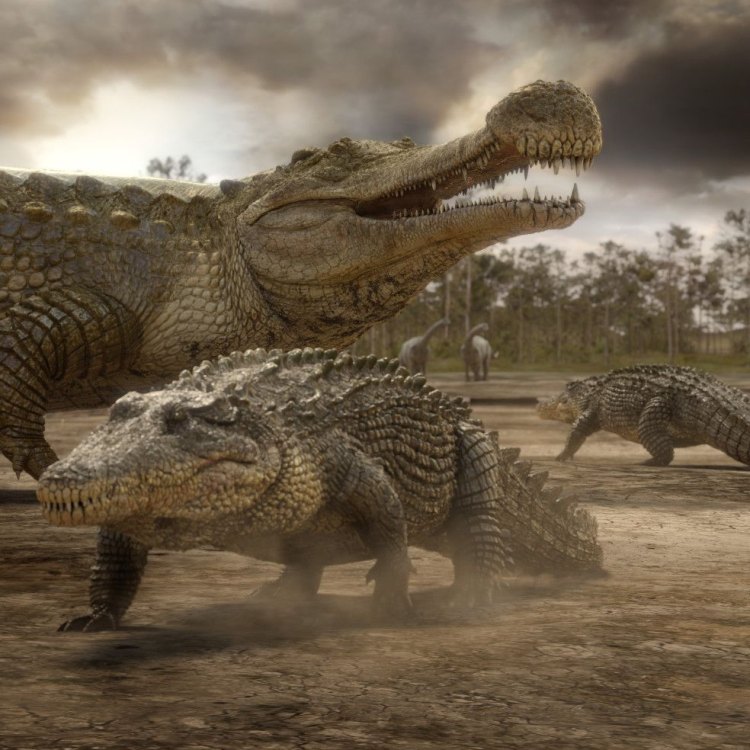
SuperCroc
- Adult Size: Very large
- Average Lifespan: Unknown
- Reproduction: Sexual
- Reproductive Behavior: Nest-building and egg-laying
- Sound or Call: Unknown
- Migration Pattern: Non-migratory
- Social Groups: Solitary
- Behavior: Ambush predator
- Threats: Climate change, habitat loss
- Conservation Status: Extinct
- Impact on Ecosystem: Top predator
- Human Use: Fossil record, scientific research
- Distinctive Features: Extremely large size, long snout, armor-like skin
- Interesting Facts: Sarcosuchus is one of the largest crocodile-like reptiles to have ever lived. Its name means 'flesh crocodile'.
- Predator: No natural predators
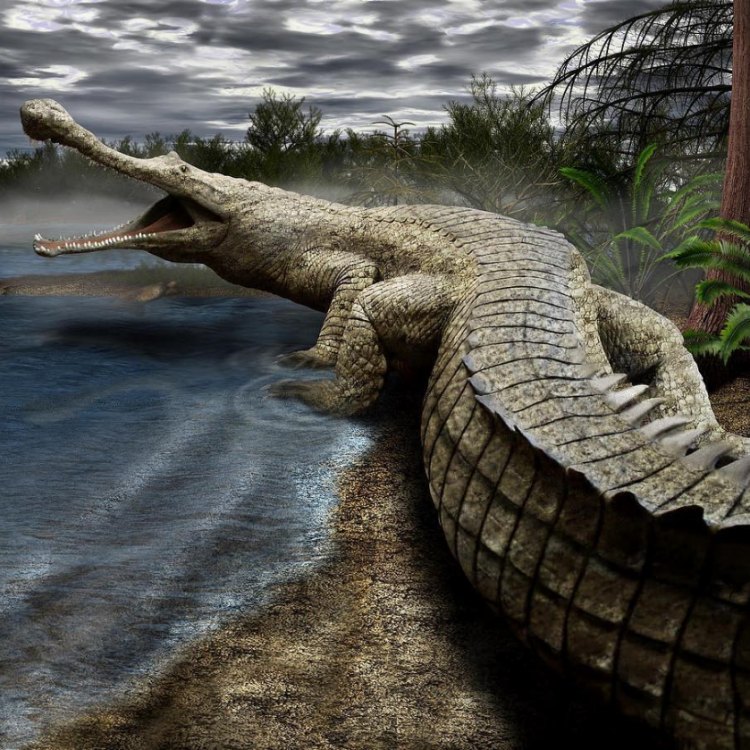
Sarcosuchus
Sarcosuchus: The Largest Crocodile-Like Reptile of All Time
When we think of crocodiles, we often picture them as vicious, prehistoric monsters lurking in murky waters. And while they may be seen as top predators in their habitats today, there was once a time when they had an even larger and more powerful relative - Sarcosuchus.This ancient creature, whose name means 'flesh crocodile', lived during the early Cretaceous period, approximately 112-99 million years ago. It roamed the Earth alongside dinosaurs, but it was unlike any other crocodilian that has ever existed PeaceOfAnimals.Com.
Let's take a deep dive into the world of Sarcosuchus and uncover its unique features, behavior, and impact on the ecosystem.
The Size of a Titan
Sarcosuchus was truly a titan among crocodiles. It is estimated to have grown up to 40 feet in length and weighed over 8 tons, making it one of the largest crocodile-like reptiles to have ever lived. To put it into perspective, that's about the size of a school bus!This enormous size was possible due to its unique physiology, including a robust and elongated snout, deep jaws, and massive muscles. Its body was also designed to be semi-aquatic, allowing it to move swiftly and silently through water.
Unknown Lifespan and Mysterious Call
While we know a lot about Sarcosuchus' physical appearance, its lifespan remains a mystery. Due to lack of evidence, scientists have not been able to determine its average lifespan. However, it is estimated that it could have lived for several decades, similar to modern-day crocodiles.Another interesting aspect is its call or vocalization Smooth Earth Snake. As of now, there is no evidence of what sounds Sarcosuchus could produce. It is possible that they communicated with each other through body language and visual cues, much like modern-day crocodiles.
Solitary Creatures with Nest-Building and Egg-Laying Behavior
Sarcosuchus was a solitary creature, meaning it traveled and hunted alone. However, during breeding season, they would build nests and lay eggs in a similar fashion to modern-day crocodiles.Fossil evidence suggests that they may have built their nests on sandbars, and their young hatchlings would have faced similar threats as modern-day crocodiles, such as predators and changing environmental conditions.
Ambush Predator: The Ultimate Hunter
While modern-day crocodiles are known for being opportunistic hunters, Sarcosuchus was an ambush predator, just like its distant relative, the gharial. It would lurk underwater, using its long, powerful jaws to snatch unsuspecting prey, such as fish, turtles, and even other dinosaurs.Its jaw was also exceptionally strong, allowing it to crush the bones of its prey with ease. Fossil evidence suggests that Sarcosuchus had a diet similar to that of modern-day crocodiles, with a varied menu that included different types of animals.
Ecosystem Impact and Extinction
Being one of the largest and most powerful predators of its time, Sarcosuchus had a significant impact on the ecosystem it lived in. As an apex predator, it played a crucial role in controlling the populations of other animals, helping to maintain a healthy balance in the ecosystem.However, like many other prehistoric creatures, Sarcosuchus became extinct, and its impact on the ecosystem vanished. Scientists believe that the combination of climate change and habitat loss may have played a significant role in its extinction. As the environment changed, Sarcosuchus was unable to adapt, leading to its demise.
Human Interest and Scientific Research
Despite being extinct for millions of years, Sarcosuchus continues to interest and fascinate humans. Its fossil remains have been found in various parts of the world, including Africa, South America, and India, making it a global phenomenon.Apart from its presence in the fossil record, Sarcosuchus has also been the subject of numerous scientific studies and research. Scientists have even used cutting-edge technology, such as CT scans, to learn more about this giant reptile and its behavior.
Distinctive Features: Long Snout and Armor-Like Skin
There's no denying that Sarcosuchus was a sight to behold. But what made it truly stand out were its distinctive features. Its long snout, which made up almost half of its body length, was filled with around 100 sharp teeth, perfect for catching and holding onto its prey.Moreover, its skin was not like that of modern-day crocodiles. Instead, Sarcosuchus had an armor-like skin, with thick scaly plates covering its body. This would have provided excellent protection against attacks from other predators.
Interesting Facts: Sarcosuchus is More than Just a Giant Crocodile
Apart from being one of the largest crocodile-like reptiles, Sarcosuchus also has other interesting facts associated with its name. For instance, it is considered the closest relative of the modern-day gharial, a crocodilian found in India and Southern Nepal.Furthermore, scientists have also discovered that Sarcosuchus may have been warm-blooded, unlike modern-day crocodiles. This makes it even more fascinating and provides insight into the evolution and biology of these ancient creatures.
No Natural Predators: The Ultimate Alpha of its Time
While modern-day crocodiles may have to deal with threats from humans and other predators, Sarcosuchus was the ultimate alpha of its time. Due to its large size, armor-like skin, and powerful jaws, it had no natural predators to fear.This made it a dominant species in its ecosystem, ruling over the rivers and lakes it called home. However, as we now know, this was not enough to save it from extinction.
In Conclusion
Sarcosuchus was a majestic and formidable creature that once roamed the Earth during the early Cretaceous period. Its extremely large size, unique features, and behavior set it apart from all other crocodile-like reptiles.Due to its dominance in the ecosystem and impact on the food chain, Sarcosuchus played a crucial role in shaping the world we know today. And while it may be extinct, its legacy lives on through its fossil remains and scientific research, reminding us of the incredible diversity of life that once existed on our planet.
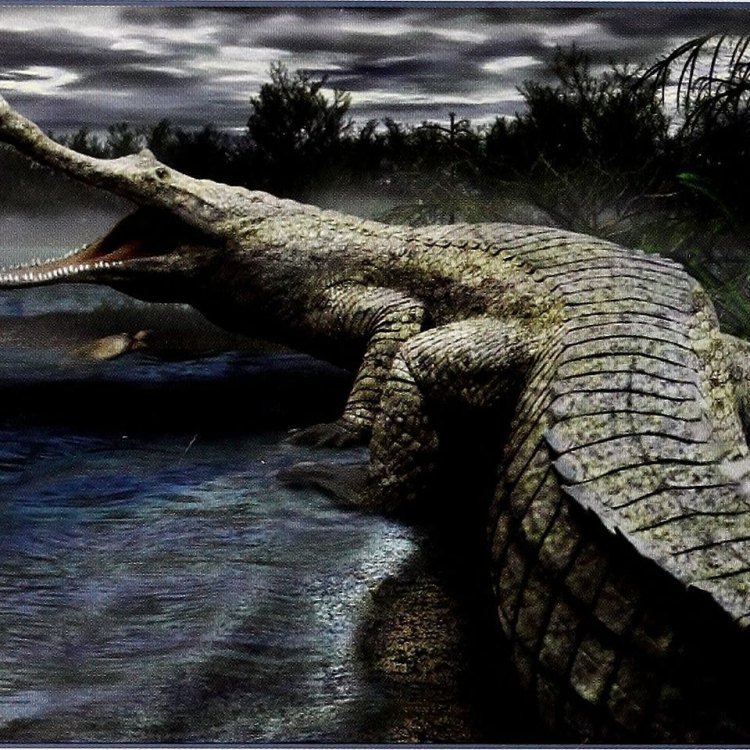
The Ancient SuperCroc: Exploring the Fascinating World of Sarcosuchus
Disclaimer: The content provided is for informational purposes only. We cannot guarantee the accuracy of the information on this page 100%. All information provided here may change without prior notice.



